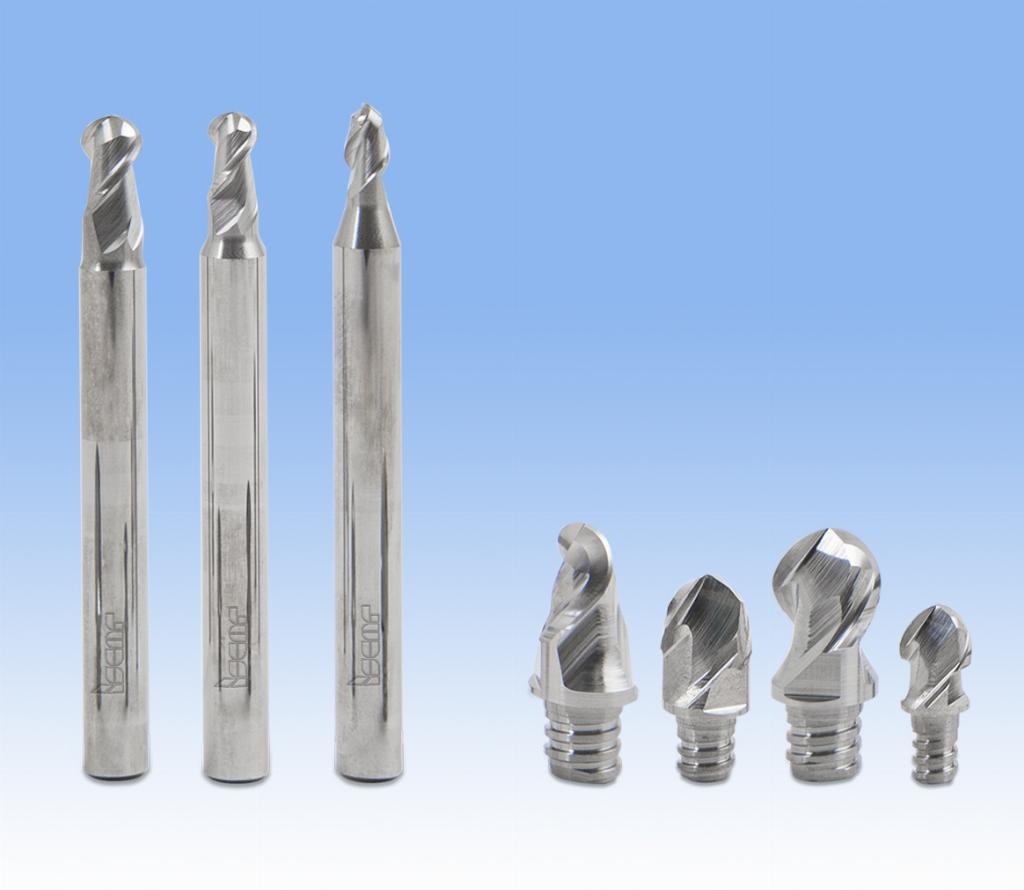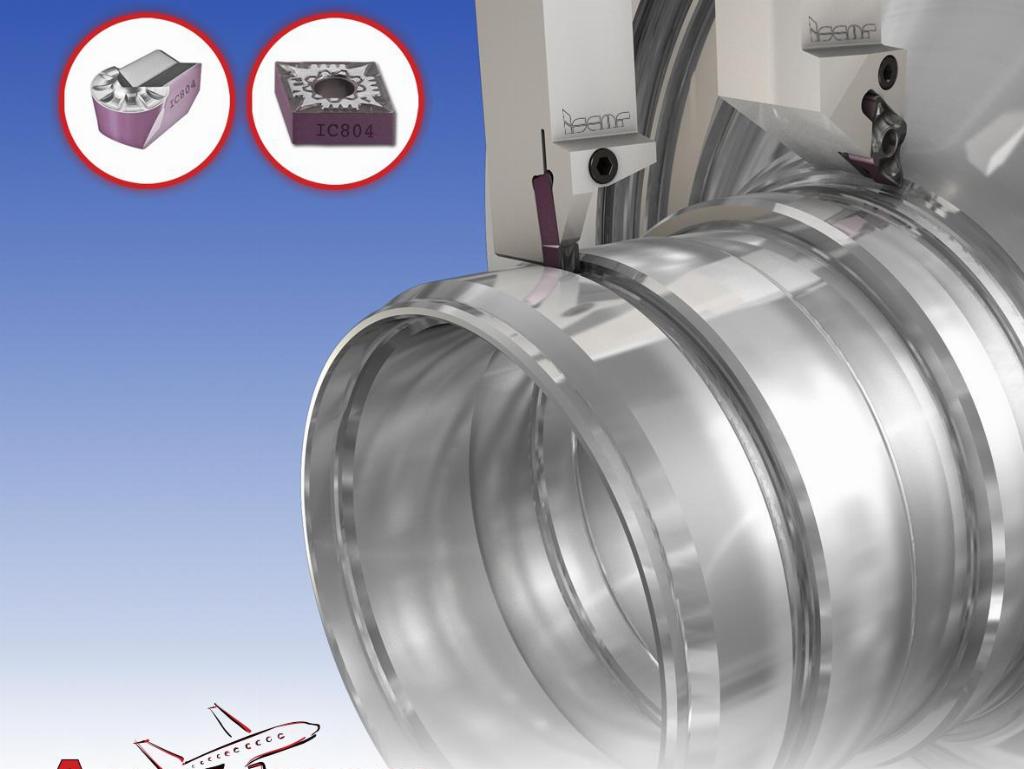Milling aluminium intelligently

David Jones, Iscar UK’s sales manager examines the milling of aluminium and the innovative new cutting tools that have been introduced by the company to ensure more efficiency and productivity.
To the casual observer, the milling of aluminium appears to be a relatively simple process – people who are not directly involved in machining the material often hold this misguided view. They believe that it’s enough to take a balanced, sharp, polished tool and rotate it at maximal speed, set medium feed and the material will cut like butter.
In comparison with machining steel, aluminium and its alloys (for the purpose of this article, I will refer to aluminium and its alloys simply as aluminium) require much less cutting force, and therefore the cutting edge of a milling tool experiences relatively low mechanical loading.
Aluminium exhibits high thermal conductivity and therefore the chips produced when machining aluminium transfer high levels of generated heat, resulting in significantly reduced thermal loading of the cutting edge. Due to these advantageous properties, the milling of aluminium is characterised by extremely high cutting speeds and feeds; however, these advantages do not guarantee that milling aluminium is an easy task.
The material characteristics of aluminium result in the formation of built-up edge (BUE) when it is machined. This unwelcome phenomenon increases the mechanical load on the cutting edge making efficient chip flow more difficult to achieve and this affects the balance of rotating tools and causes the entire machining process to become less efficient.
The efficient evacuation of aluminium chips may also be affected by the use of the wrong kind of cutting tool. If the volume of a tool’s chip gullet (flute) is not sufficient, the long chips generated during aluminium milling will clog the tool. Overcoming this obstacle demands the use of a tool with less teeth or reducing the applied cutting data; actions that negatively impact productivity.
Machining variation
From a machinability point of view, aluminium is not a uniform material. Alloying elements (in particular, silicon), material type (wrought, cast) and treatment methods all affect cutting properties. Multiple other factors such as the shape of a machine part, workholding conditions and operational requirements (accuracy, roughness, etc.) add their own limitations and must be considered when choosing machining strategies and selecting an appropriate cutting tool. Hence, in many cases, machining aluminium in general and the milling of aluminium in particular, are often not the simple tasks they appear to be.
Tool manufacturers take the specific characteristics related to the milling of aluminium into consideration when developing cutters. A key to success is the correct combination of cutting geometry, tool material and tool treatment, in addition to the options provided for the delivery of an optimum coolant supply.
When considering applications for milling aluminium, large aircraft components, such as wing elements, door or window frames for example, come to mind. Generally, these parts are produced from whole blocks, often weighing several tons, and it is often necessary to remove up to 80-85% of the original weight to produce the final required shape of an aluminium component. In contrast, in the global automotive industry, which is also a massive consumer of aluminium, various hard cast aluminium grades have been introduced to their components. The increased abrasiveness of these parts negatively affects tool wear.
Better by design
Iscar has developed an entire, comprehensive range of indexable milling cutters, designed specifically for the efficient machining of aluminium. Each family of these high-quality cutters features integral or lightweight body designs, innovative principles of carbide insert clamping, structures with adjustable cartridges, various ground and polished inserts with different corner radii, and, increasingly popular in aluminium machining, inserts with polycrystalline diamond (PCD) tips.
The vast majority of the cutters have inner channels to provide efficient coolant supply through the body. The Iscar Helialu line of indexable milling tools enables effective high-speed machining (HSM) of aluminium, ensuring powerful metal removal rates (MRR), high levels of accuracy and the delivery of excellent surface finish characteristics – all of the qualities demanded by the world’s producers of aluminium components.
Metalworking industries produce large and small aluminium parts, and in many cases require milling cutters with more modest dimensions. The size of these tools is not suitable for the application of indexable inserts, so in this area solid carbide tools have distinct advantages.

Moreover, the high-accuracy of solid carbide endmills renders them beyond comparison when used for the precision finishing of larger components. Therefore, Iscar remains heavily involved in the design and development of advanced solid carbide tools for the milling of aluminium. Recent progressive additions to this extensive range have further increased their value to users throughout the industrial world.
Iscar’s ECR-B3-R-C family of three-flute, solid carbide endmills are designed for rough machining at high MRR. The innovative endmills have serrated cutting edges that divide wide chips into narrow strips that are easily evacuated. Inner coolant channels directed to each cutting edge enables the delivery of uninterrupted coolant flow to the cutting zone.
These two design features, in combination with polished flutes, significantly improve chip evacuation abilities and result in considerably increased productivity. The serrated edge that chops the chips also enhance vibration resistance, and together with the relieved neck of the endmills, contributes to stable cutting under high tool overhang conditions.
It’s all in the flutes
Why does the ECR-B3-R-C family have three flutes and no more? When milling aluminium, chatter and unwelcome vibrations that are generated during the cutting process are a factor of primary importance. Various researches and metalworking practice show that a three-flute configuration is the optimal design for 90° solid carbide endmills for machining aluminium. In high-efficiency milling, this arrangement ensures a flute volume that is necessary for chip flow, whilst it does not increase chatter. The majority of the endmills for use on aluminium are based on this approach and Iscar’s ECR-B3-R-C is no exception.
At the same time, the desire to increase the productivity of endmills led to the launch of an innovative four-flute Iscar design. Chatterfree ECA-H4 CF is a family of endmills that provides an extra flute to help increase MRR for both roughing and finishing operations. Although a four-flute arrangement, these endmills have impressive vibration dampening abilities due to the inclusion of a non-equal flute helix and the variable angular pitch of their teeth. Also, Iscar’s tool designers have succeeded in creating a core diameter and the cross-section area of a flute, similar to the existing three-flute endmills of the same diameter from the ECA-H3 family.
Solid performers
The mould and die and aerospace industrial sectors often require small milling tools for the precise machining of 3D surfaces. A newly introduced Iscar family of solid carbide ball nose endmills EBA-B2, with polished flutes and a diameter range of 1-6 mm, is intended precisely for these kinds of demanding applications. The new family extends the lower range of the 8mm to 25mm diameter Multi-Master MM EBA replaceable ball nose heads.
The modular Multi-Master family of assembled tools, comprising shanks of different configurations and a wide variety of replaceable cutting heads, is ideal for the efficient milling of aluminium, especially in applications requiring high tool overhangs
Long-reach solid carbide endmills are produced from expensive carbide rods of considerable overall length. Despite only the small fluted part of these endmills being directly involved in cutting, following tool wear or a sudden breakage, the whole expensive rod needs to be thrown away. This is a serious economic disadvantage. In contrast, in such cases, Multi-Master users only need to replace the cutting head.
To conclude, it is fair to say that the milling of aluminium can be easy if performed intelligently, by applying an efficient cutting strategy and by using the correctly milling tools.
Iscar www.iscar.co.uk














